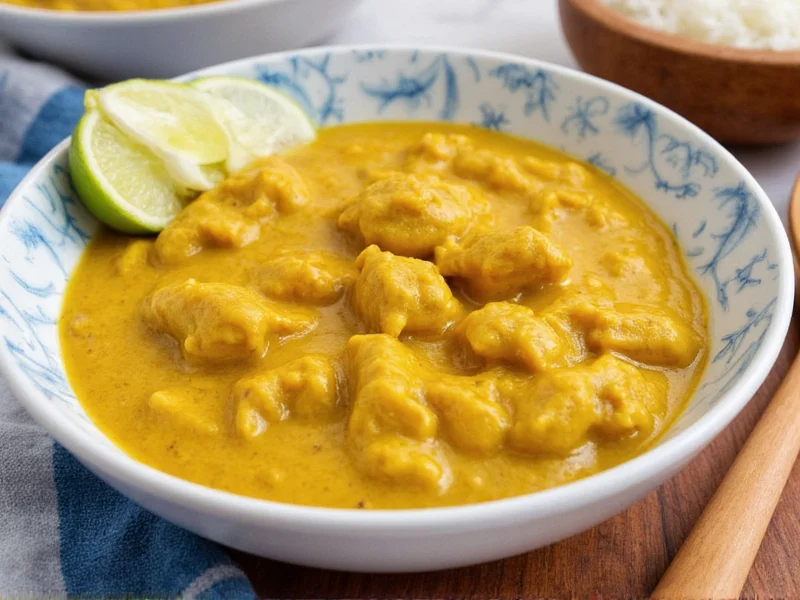Peruvian yellow sauce represents one of the culinary treasures of South America, deeply rooted in the coastal regions of Peru. This versatile sauce serves as both a marinade for Pollo a la Brasa (Peruvian rotisserie chicken) and a finishing condiment that elevates the dish's flavor profile. Understanding its authentic preparation separates genuine Peruvian cuisine from imitations.
The Heart of the Sauce: Aji Amarillo Peppers
Aji Amarillo peppers (Capsicum baccatum) form the essential foundation of authentic yellow Peruvian chicken sauce. These bright orange-yellow peppers mature to their characteristic color and develop complex tropical fruit notes with subtle heat. Unlike common misconceptions, fresh Aji Amarillo peppers appear orange when ripe, not yellow—the "amarillo" (yellow) name refers to the prepared sauce's final color.
When fresh peppers aren't available, high-quality frozen pulp or paste provides the most authentic alternative. Many commercial products labeled "Aji Amarillo paste" actually contain yellow food coloring and lack genuine pepper flavor—always check ingredients for "aji amarillo" as the primary component without artificial colors.
Traditional Yellow Sauce Recipe
This authentic preparation yields enough sauce for 4 servings of Peruvian chicken:
| Ingredient | Measurement | Notes |
|---|---|---|
| Aji Amarillo paste | ½ cup (120g) | Must be 100% pepper pulp without additives |
| Garlic | 4 cloves | Finely minced |
| Yellow onion | ½ cup finely diced | White onion works as substitute |
| Fresh cilantro | ¼ cup chopped | Stems included for maximum flavor |
| Vegetable oil | ⅓ cup (80ml) | Traditional preparation uses oil, not broth |
| Lime juice | 2 tablespoons | Freshly squeezed |
| Evaporated milk | ½ cup (120ml) | Traditional thickening agent |
| Salt | To taste | Start with ½ teaspoon |
Step-by-Step Preparation
Follow these precise steps for authentic flavor development:
- Sauté aromatics: Heat oil in skillet over medium heat. Add garlic and onion, cooking until translucent (3-4 minutes) without browning.
- Add pepper base: Stir in Aji Amarillo paste, cooking for 2 minutes to develop flavor while preventing raw pepper taste.
- Incorporate liquids: Gradually whisk in evaporated milk until smooth. Avoid boiling to prevent separation.
- Finish with fresh elements: Remove from heat, then stir in cilantro and lime juice. Season with salt to taste.
- Cooling process: Let sauce rest for at least 30 minutes before serving to allow flavors to meld.
Perfect Pairing with Peruvian Chicken
For authentic Pollo a la Brasa preparation:
- Use ⅓ of the sauce as marinade (combine with 2 tablespoons vinegar)
- Marinate chicken for minimum 4 hours, preferably overnight
- Reserve remaining sauce for serving alongside cooked chicken
- Traditional accompaniments include french fries, salad, and Peruvian fried rice
Ingredient Substitutions and Common Mistakes
When authentic ingredients prove difficult to source:
- Aji Amarillo substitute: Mix 2 parts roasted yellow bell peppers with 1 part serrano peppers (adds heat) and 1 teaspoon paprika for color
- Evaporated milk alternative: Blend ¼ cup raw cashews with ½ cup water for creamy texture (soak cashews 2 hours first)
- Avoid: Using yellow food coloring, bell peppers alone, or hot sauce as substitutes—they create inauthentic flavor profiles
- Critical mistake: Boiling the sauce after adding dairy causes separation—always maintain gentle heat
Storage and Shelf Life
Properly stored yellow Peruvian chicken sauce maintains quality:
- Refrigerator: 5-7 days in airtight container
- Freezer: 3 months (thaw overnight in refrigerator)
- Never refreeze previously frozen sauce
- Always use clean utensils to prevent contamination
Regional Variations Across Peru
While the coastal version remains most popular internationally, regional adaptations exist:
- Lima style: Includes a touch of huacatay (black mint) for herbal complexity
- Highland variation: Incorporates rocoto peppers for increased heat
- Northern coast: Adds a hint of sweet potato for subtle sweetness
- Traditional street food version: Thinner consistency for dipping french fries
Authenticity Indicators
Identify genuine Peruvian yellow sauce by these characteristics:
- Natural golden-orange hue without artificial coloring
- Complex flavor profile balancing fruitiness, moderate heat, and creaminess
- Slightly thick but pourable consistency
- Aromatics of fresh cilantro and garlic complementing the pepper
- No vinegar or citrus dominant notes (unlike many imitations)











 浙公网安备
33010002000092号
浙公网安备
33010002000092号 浙B2-20120091-4
浙B2-20120091-4